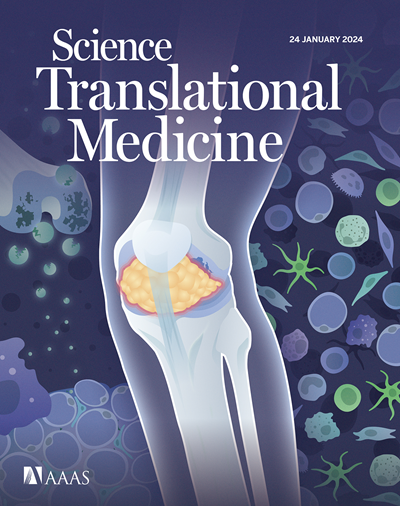纹状体刺激增强啮齿动物和人类的认知控制和证据处理
IF 15.8
1区 医学
Q1 CELL BIOLOGY
引用次数: 0
摘要
脑部疾病,特别是精神疾病,可以通过直接脑电刺激有效治疗,但临床进展需要了解治疗机制。动物模型没有帮助,因为没有直接的精神疾病动物模型。在这里,我们提出了一条潜在的途径,通过利用大多数精神障碍的共同因素:认知控制受损。我们之前的研究表明,脑深部刺激(DBS)可以改善人类的认知控制。现在,我们在大鼠身上使用集合转移任务,对结果进行反向翻译。类似于dbs的中纹状体刺激在不影响准确性的情况下提高了反应时间,这与我们人类的研究结果一致。通过同伴任务和基于模型的分析,排除了冲动性、动机、运动和学习效应。为了识别受影响的特定认知过程,我们应用了强化学习漂移-扩散模型。结果表明,类dbs刺激增强了证据积累速率,降低了决策阈值,改善了领域认知控制。对先前人类数据的重新分析表明,同样的机制也适用于人类。这种反向/正向转化模型可能对临床DBS实践和未来的试验设计具有近期意义。本文章由计算机程序翻译,如有差异,请以英文原文为准。
Striatal stimulation enhances cognitive control and evidence processing in rodents and humans
Brain disorders, in particular mental disorders, might be effectively treated by direct electrical brain stimulation, but clinical progress requires understanding of therapeutic mechanisms. Animal models have not helped, because there are no direct animal models of mental illness. Here, we propose a potential path past this roadblock, by leveraging a common ingredient of most mental disorders: impaired cognitive control. We previously showed that deep brain stimulation (DBS) improves cognitive control in humans. We now reverse translate that result using a set-shifting task in rats. DBS-like stimulation of the midstriatum improved reaction times without affecting accuracy, mirroring our human findings. Impulsivity, motivation, locomotor, and learning effects were ruled out through companion tasks and model-based analyses. To identify the specific cognitive processes affected, we applied reinforcement learning drift-diffusion modeling. This approach revealed that DBS-like stimulation enhanced evidence accumulation rates and lowered decision thresholds, improving domain-general cognitive control. Reanalysis of prior human data showed that the same mechanism applies in humans. This reverse/forward translational model could have near-term implications for clinical DBS practice and future trial design.
求助全文
通过发布文献求助,成功后即可免费获取论文全文。
去求助
来源期刊

Science Translational Medicine
CELL BIOLOGY-MEDICINE, RESEARCH & EXPERIMENTAL
CiteScore
26.70
自引率
1.20%
发文量
309
审稿时长
1.7 months
期刊介绍:
Science Translational Medicine is an online journal that focuses on publishing research at the intersection of science, engineering, and medicine. The goal of the journal is to promote human health by providing a platform for researchers from various disciplines to communicate their latest advancements in biomedical, translational, and clinical research.
The journal aims to address the slow translation of scientific knowledge into effective treatments and health measures. It publishes articles that fill the knowledge gaps between preclinical research and medical applications, with a focus on accelerating the translation of knowledge into new ways of preventing, diagnosing, and treating human diseases.
The scope of Science Translational Medicine includes various areas such as cardiovascular disease, immunology/vaccines, metabolism/diabetes/obesity, neuroscience/neurology/psychiatry, cancer, infectious diseases, policy, behavior, bioengineering, chemical genomics/drug discovery, imaging, applied physical sciences, medical nanotechnology, drug delivery, biomarkers, gene therapy/regenerative medicine, toxicology and pharmacokinetics, data mining, cell culture, animal and human studies, medical informatics, and other interdisciplinary approaches to medicine.
The target audience of the journal includes researchers and management in academia, government, and the biotechnology and pharmaceutical industries. It is also relevant to physician scientists, regulators, policy makers, investors, business developers, and funding agencies.
 求助内容:
求助内容: 应助结果提醒方式:
应助结果提醒方式:


